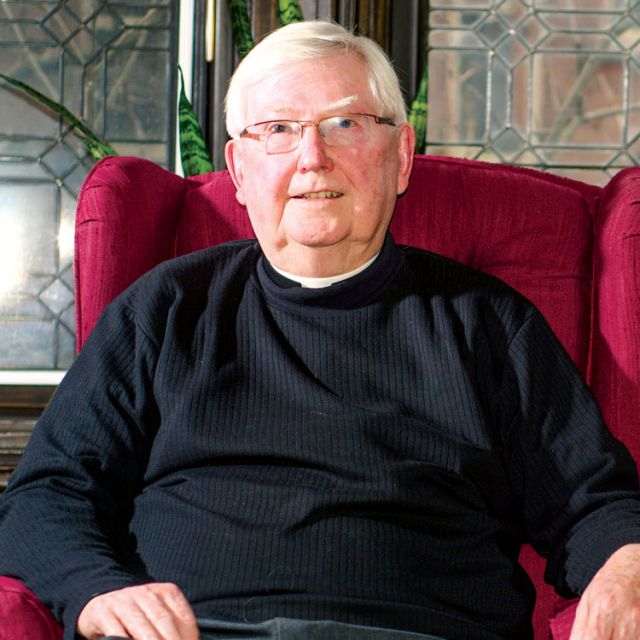On Dec. 10 Irwin, a professor of biblical studies at Toronto’s University of St. Michael’s College, was to hold the first of a two-part public lecture series titled The Sacred Mysteries of Advent: Liturgies of Hope, at St. Basil’s Church on the campus.
“We were talking about the liturgies of Advent, the public worship of the Masses and to a lesser extent we were talking about the divine office,” said the Basilian priest. “If you are thinking about Advent you have to start with the centre of Advent, as it is the centre of every season, which is the Eucharist. So my first point was to look at the Eucharist because that is what we call the sacred mysteries.”
Irwin said one must not get too caught up in the dictionary definition of the word mystery when attempting to wrap their head around the idea of the sacred mysteries. This is because the mystery, being the conception and resurrection of Christ, is something that Christians already know to be a fact. Furthering that point, Irwin said one must have faith to hold this belief which in itself is the mystery of faith — a secret Christians have already been told.
And while Irwin noted that faithful Christians already know that God will send His Son to be our Saviour, the wording of the contemporary translations can cause confusion due to the emphasis on the word mystery.
“The new translation of the liturgy has empathized so much this question of mystery,” said Irwin. “So I thought it really needs explanation. It is a good time .... to make it so that (parishioners) will understand and get something more out of Advent because of their understanding of this.”
Irwin focuses primarily on the liturgy of the first two Sundays of Advent with a brief discussion of liturgies from the days between. In doing so he uses the metaphor of Advent being a stained glass window with Jesus in the middle where all of the surrounding shards of glass represent the liturgy of a specific day of the season.
“Imagine Advent as a big stained glass window and right in the centre of it is the risen Christ carrying His cross, kind of giving His body and blood to His disciples,” said Irwin.
For his second lecture, which will be held Dec. 17, Irwin intends to briefly review the first lecture and then move onward to Christmas Eve.
“I want to prepare them to talk about each week and each liturgy.”
But this deeper understanding of mystery is not only found in the liturgy, something Irwin thought essential to make note of since few people are able to attend church on a daily basis.
“I stress that we can’t just look at the readings,” he said. “We also have to look at the prayers. The prayers are very specific about what grace we are praying for.”
And while Irwin said it is particularly important to have this understanding during the Advent season, the theory behind this understanding of the sacred mysteries can be applied to any liturgy throughout the year.
“Every moment has contained in it Christ and that particular grace that that moment is bringing to us,” said Irwin. “So that moment is kind of revealed to us in the particular liturgies.”

